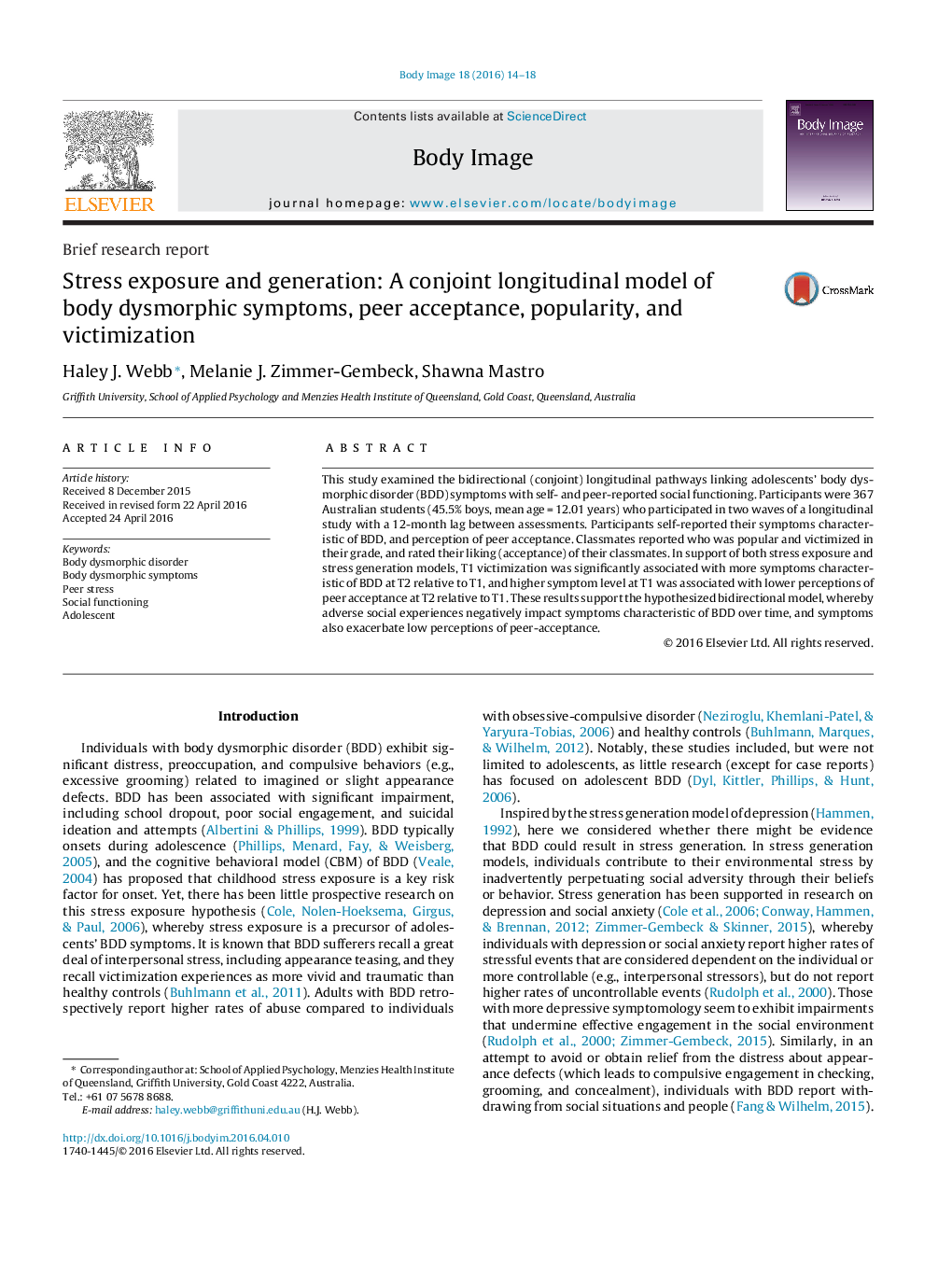| Article ID | Journal | Published Year | Pages | File Type |
|---|---|---|---|---|
| 902708 | Body Image | 2016 | 5 Pages |
•Test of a conjoint model of body dysmorphic disorder (BDD) symptoms and peer stress.•Adolescents’ peer victimization was associated with increasing BDD symptoms.•BDD symptom level was associated with declining self-perceived peer acceptance.•Results support a conjoint model of BDD symptoms and social functioning.
This study examined the bidirectional (conjoint) longitudinal pathways linking adolescents’ body dysmorphic disorder (BDD) symptoms with self- and peer-reported social functioning. Participants were 367 Australian students (45.5% boys, mean age = 12.01 years) who participated in two waves of a longitudinal study with a 12-month lag between assessments. Participants self-reported their symptoms characteristic of BDD, and perception of peer acceptance. Classmates reported who was popular and victimized in their grade, and rated their liking (acceptance) of their classmates. In support of both stress exposure and stress generation models, T1 victimization was significantly associated with more symptoms characteristic of BDD at T2 relative to T1, and higher symptom level at T1 was associated with lower perceptions of peer acceptance at T2 relative to T1. These results support the hypothesized bidirectional model, whereby adverse social experiences negatively impact symptoms characteristic of BDD over time, and symptoms also exacerbate low perceptions of peer-acceptance.
